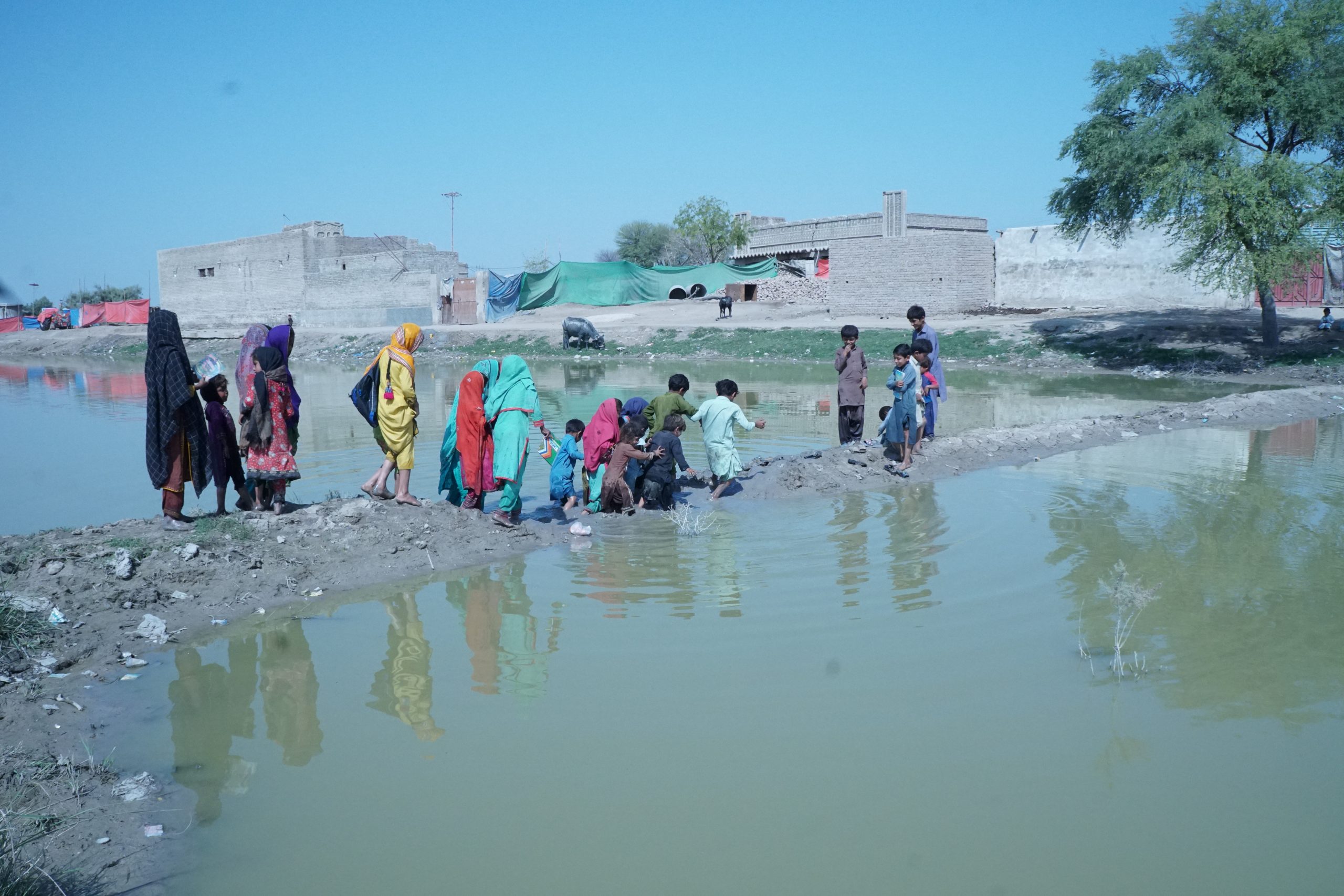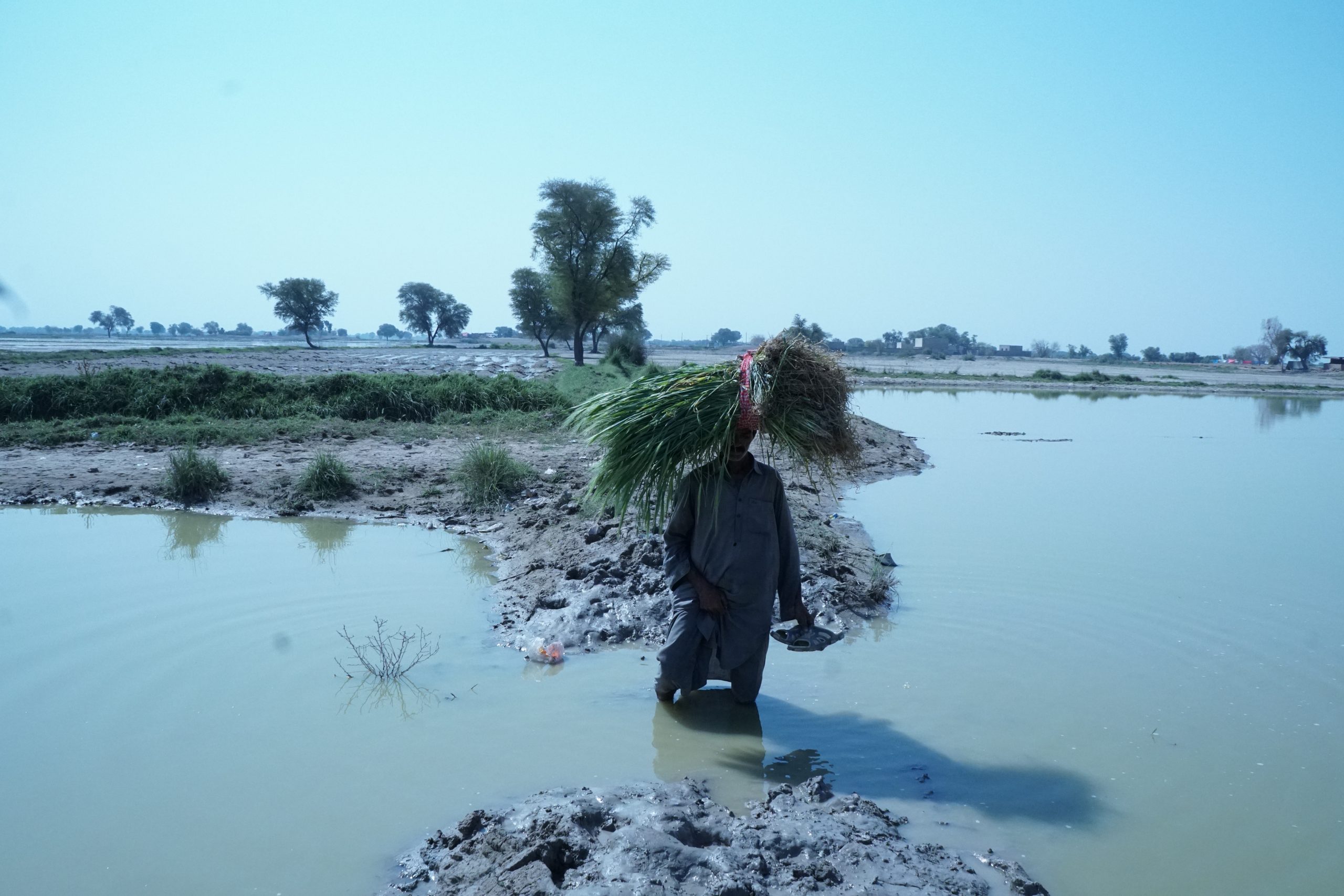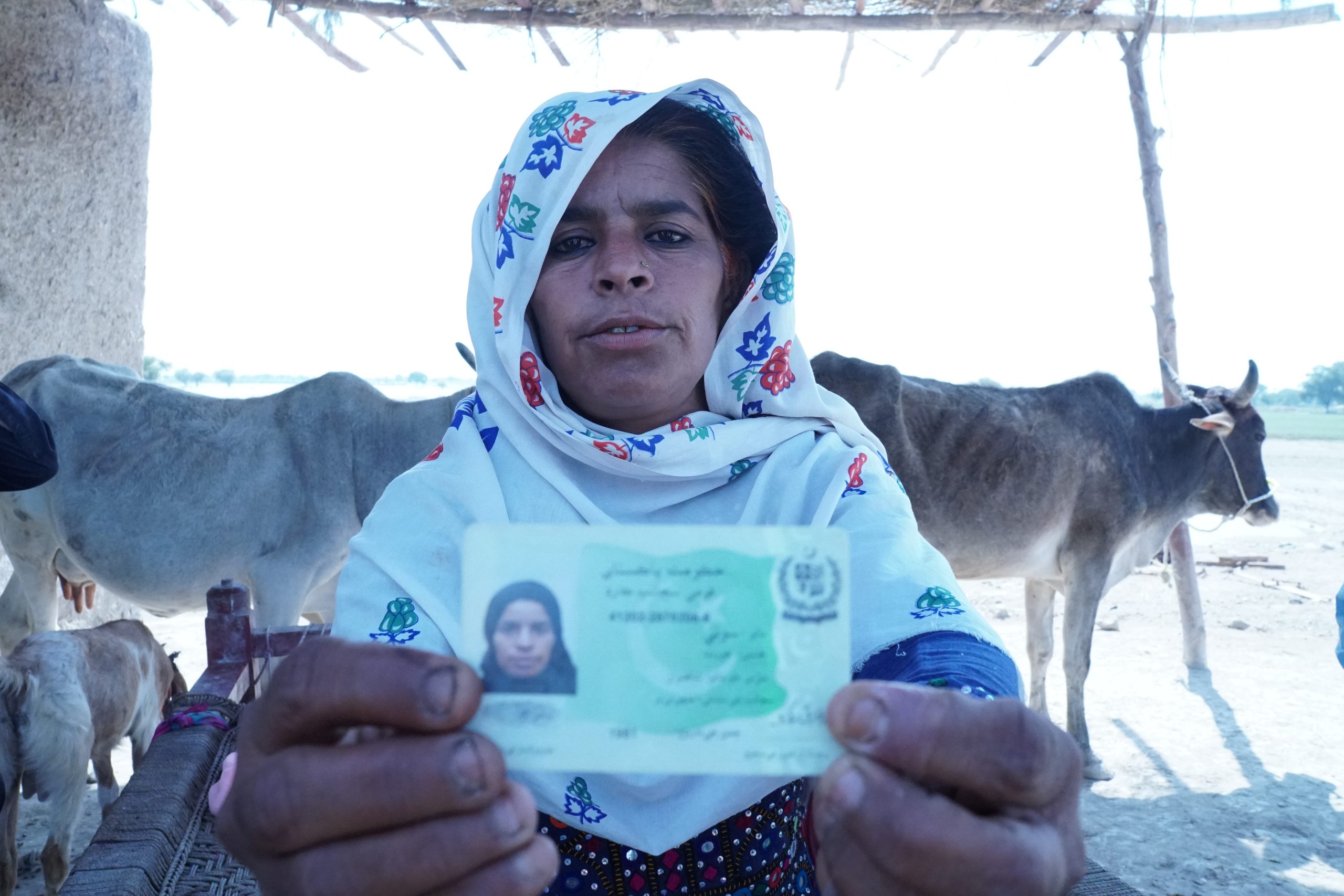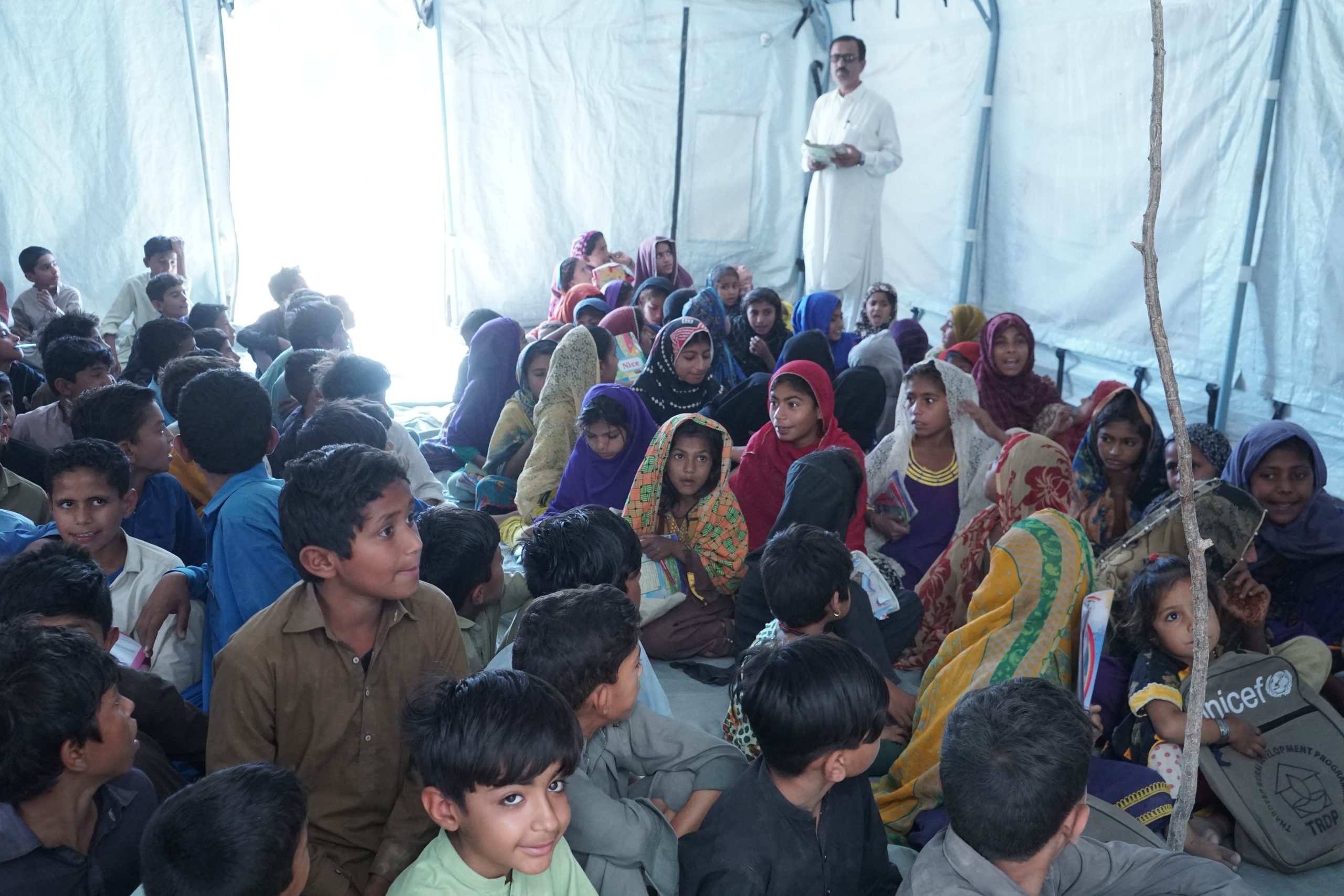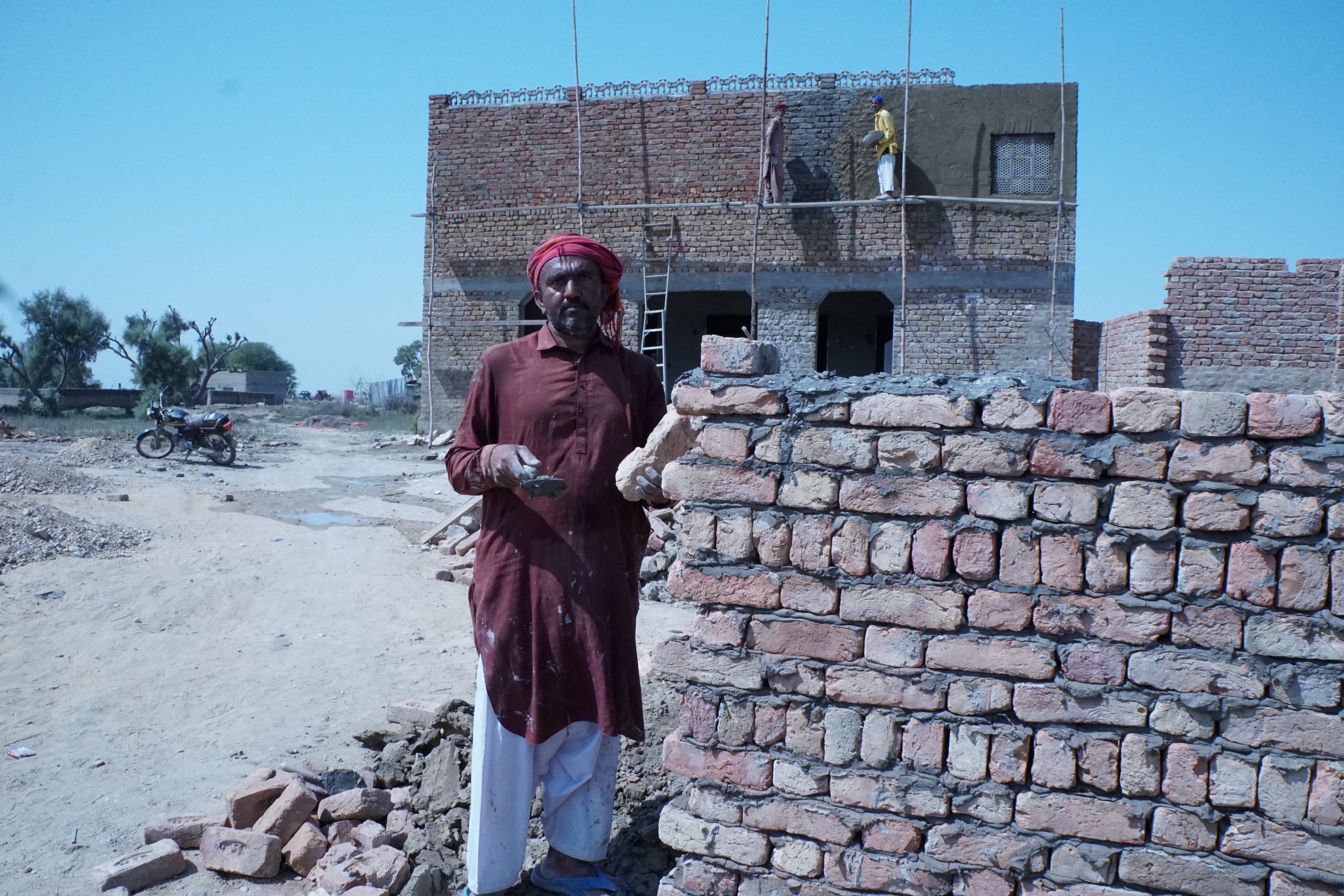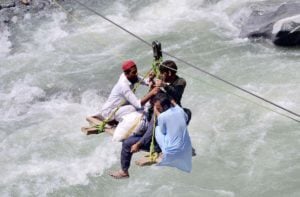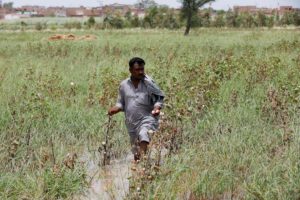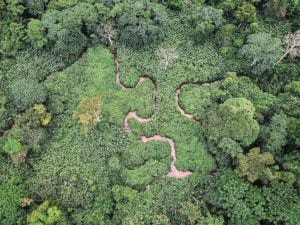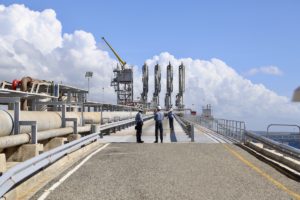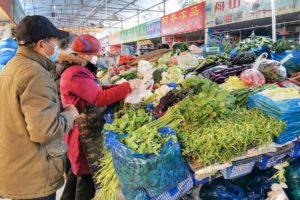As Muslims worldwide prepare to celebrate Eid, for millions in Pakistan the religious holiday will be marred by ongoing problems caused by the 2022 floods. Large areas of the southern province of Sindh remain inundated, while damage to the drainage system caused by the flooding is an obstacle to communities’ recovery.
Ali Akbar Jamali, a farmer in the village of Aadho Jamali in Sindh, said that the floodwaters are an ongoing disaster. Talking to The Third Pole last month, Jamali said that the waters have not fully receded, and authorities have not been able to clear them. Ali’s family, along with many of the residents of Aadho Jamali, are still living in a tent and have not been able to rebuild their house.
“Rain destroyed our standing crops of cotton. Sowing of the next crop of wheat was also not possible because of water standing in agriculture fields,” said Jamali, adding that people cannot afford to buy wheat and that there is a shortage of food.
“Schools and hospital facilities in our areas are under water. It is worrisome for us and families,” he added.
The latest report on the situation by the United Nations Office for the Coordination of Humanitarian Affairs, published on 9 March 2023, states that there are more than 31,000 internally displaced people in Sindh. Across Pakistan, approximately 1.8 million people are still living near stagnant pools of water, leading to higher levels of vector-borne disease, contributing to malnutrition, and disrupting the ability of people to get to work. The report, citing International Labour Organization data, says that about 4.3 million workers have lost their jobs or suffered economic disruption, with the agriculture sector most impacted.
Sindh was badly affected by the 2022 Pakistan floods. According to the Provincial Disaster Management Authority, more than a 1,000 people died and over 12 million – about a quarter of the province’s population of about 50 million – were affected. Nearly 1.5 million houses were destroyed, another 600,000 partially damaged, and around 1.5 million hectares of crops were damaged.
Speaking to The Third Pole in March, Jam Khan Shoro, Sindh’s minister for irrigation, said: “98% of the area that came under water during last year during floods in Sindh has been cleared off. [Only] some areas which are low-lying and under depression are still under water.”
His statement was at odds with satellite imagery from the United Nations Satellite Centre (UNOSAT) however, which revealed that although the area covered by floodwater had reduced from 2,315 square kilometres in early August 2022 to 850 sq km by the end of February 2023, a reduction of approximately 63%, this still left about a million people living near floodwaters. While the floodwaters may have reduced further since the end of February, there is no independent data to verify this.
Now, as the people of Sindh come out of a difficult winter, they face the challenges of the sweltering summer.
Strains on women continue
Since the 2022 floods, Soni Jamali has been living in a tent provided by the government in the village of Allahyar Jamali, where her house used to be.
With 10 children to provide for, she is experiencing numerous hardships and financial difficulties. “There is no government support for us,” she said. Soni and her husband are agricultural labourers, but “last year due to rains our standing crops of cotton and livestock were washed away. We are in debt. People are asking for their money, but we don’t have resources to pay them back.”
The Sindh government states that it has provided more than 700,000 tents, among other facilities, to those who have been displaced. Despite this, many are struggling to meet their basic needs, particularly women who face additional challenges due to a lack of privacy.
Sajida Jamali, a relative of Soni who also lives in Allahyar Jamali, said that washrooms are desperately needed, adding, “It is a matter of shame, as we are ladies.” The NGO WaterAid provided emergency temporary toilets, but with only one for about 15 households many people are forced to defecate in the open.
No money to repair drainage infrastructure
The problem goes beyond removing the remaining standing water. Jam Khan Shoro, the irrigation minister, said the pressing need now is to repair Sindh province’s network of canals, embankments and other drainage infrastructure. “We need PKR 100 billion [USD 350 million] just to restore drainage in Sindh,” said Shoro.
“So far, only stopgap arrangements in restoring drainage have been done,” added Shoro, citing the lack of easily accessible funds.
The minister said that 236 breaches out of a reported total of 5,335 have been filled. He also told The Third Pole that authorities were studying whether it was worth redesigning the drainage of the Left Bank Outfall Drain (LBOD). The LBOD, which became operational in 1988, is supposed to drain saline and agricultural runoff water from Sindh’s agricultural lands and discharge it into the Arabian Sea.
A ‘solution’ that may be part of the problem
The minister said: “Feasibility studies are also being done to know that if LBOD water discharge capacity is enhanced, what could be the environmental impacts.”
Others, however, say that the LBOD is part of the problem.
“Sindh’s left side districts [those on the left bank of the Indus River] have had centuries-old natural ways of drainage,” said Iqbal Hyder, the executive director of the Laar Humanitarian and Development Programme, a non-governmental organisation based in Badin, Sindh, that works on disaster management in the province. “However the LBOD crosses [traditional drainage systems] at Zero Point [where the canal meets the Arabian Sea] which creates the drainage problem especially during floods.”
As a result, Hyder said, Badin and the surrounding areas have been flooded three times in recent history, during the floods of 1994 and 2022, and a cyclone in 1999. Worse, as the 2022 floodwaters filled the LBOD, the Arabian Sea seawater was forced back up the drain at high tide, leading to saline intrusion in farmland.
Hyder also pointed out that illegal construction on natural drainage systems has deeply undermined water security. “The government has announced that they will rehabilitate the existing LBOD. However, without making a drainage system that allows flow of natural ways into the sea and removal of encroachment, the problem would not be solved permanently,” he added.
Experts say that strengthening river embankments and overhauling the drainage system is crucial.
“If a flood carrying 1.2 million cusecs of water arrives, the existing Indus River embankments may not sustain it. Thus, Sindh could face mass-level devastation much bigger than 2022,” Khalid Hyder Memon, a former secretary of the Irrigation Department in Sindh, told The Third Pole.
Syed Nadeem Shah, vice-president of the Sindh Abadgar Board, which represents agricultural groups, said that a proper drainage system capable of facing the increasingly extreme weather brought by climate change is vital for agriculture. He pointed out that agriculture contributes 22% to Pakistan’s GDP and that Sindh is the second-largest province by agricultural output, with 75% of its population involved in the sector.
“Neglecting drainage improvement [in the face of] climate change challenges may harm Pakistan’s economy, as happened in 2022,” Shah warned.
